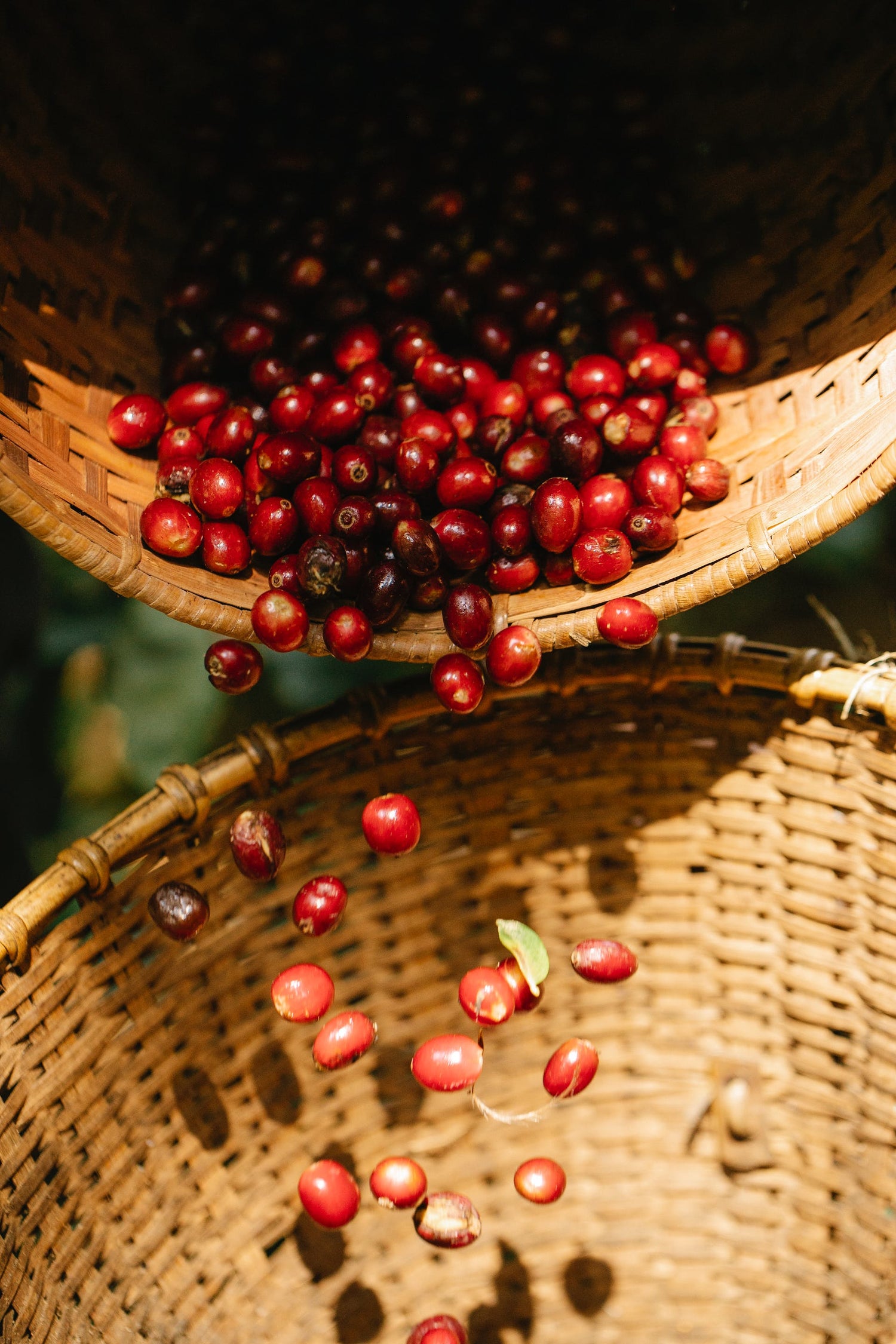
Coffee harvest: This is how the coffee gets into your cup
Have you ever wondered how exactly your beloved coffee gets from the plantation to your cup? Well, we will reveal this secret now. We will not only address the process of harvesting coffee, but also the different types of coffee plants as well as current challenges and developments. Are you ready?
The coffee harvest begins with the coffee plant
Let's start with the protagonist of the coffee harvest: The evergreen coffee plants, scientifically known as Coffea, grow as a tree or bush and are very demanding. The two main types , Arabica and Robusta, dominate the coffee market worldwide. Arabica, with its mild taste and distinctive aromas, prefers higher altitudes and mild temperatures, while Robusta, with a stronger taste, thrives at lower altitudes.
The growing areas stretch like a green belt along the equator - from the high-altitude plantations in Ethiopia to the tropical climes of Brazil . Each coffee therefore impresses with different characteristics and its very own coffee aroma. Whether fruity and lively or nutty and chocolaty , with our coffee finder you can find out in just a few minutes which aroma and country of origin suits you.
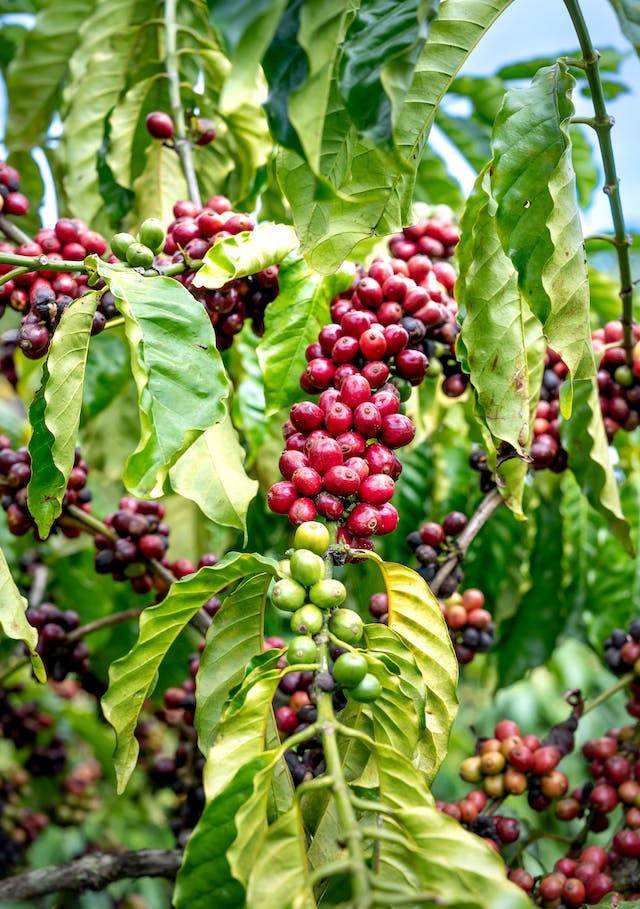
Coffee harvest and growing cycle
The coffee harvest does not simply begin with picking the fruit. It is the result of a carefully thought out cycle. The coffee plant places high demands on its environment, from moderate temperatures to sufficient rainfall. It also requires special care, adequate watering and regular pest control. After planting, it takes 3 to 5 years before it even bears fruit. A good coffee doesn't come in a flash!
The flowering period finally heralds the beginning of the coffee harvest. After pollination, these flowers develop into green coffee cherries, which over time take on their characteristic red color. This usually takes around 6 to 7 months. The time of harvest is then crucial in order to obtain the best coffee beans.
Then you have to hurry: To ensure that the coffee cherries don't ferment after the coffee harvest and taste rotten, they have to be processed within 5 hours.
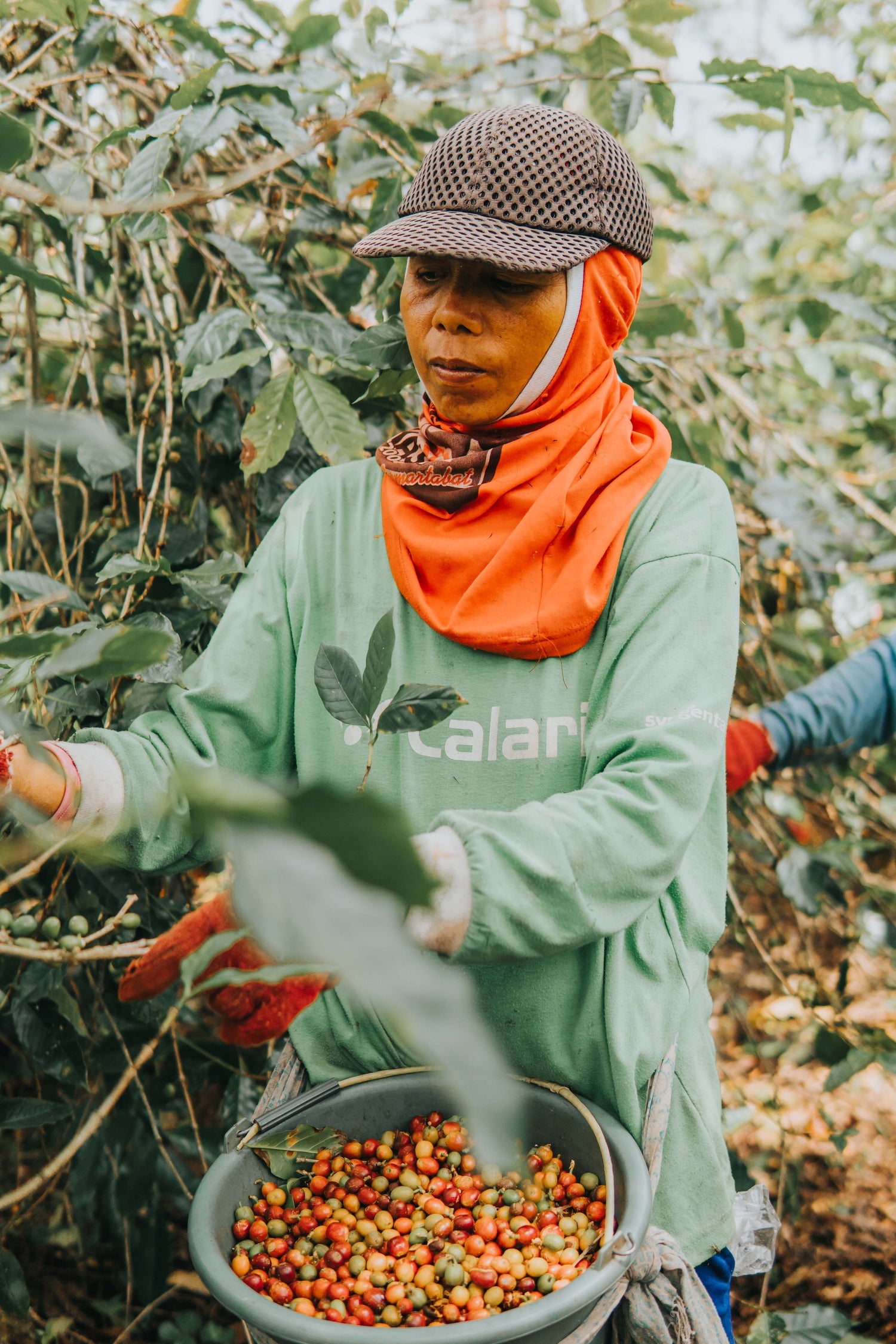
Harvesting methods: This is how the coffee harvest works
In many growing regions, the ripe coffee cherries are harvested by hand. Not an easy task, because the coffee cherries don't always ripen at the same time. Coffee farmers therefore not only have to keep an eye on the color of the coffee cherries, but also use their sense of touch. Ripe coffee cherries are soft and give when lightly pressed. But the labor-intensive method is worth it because it ensures higher quality and only the best cherries find their way into the harvest baskets.
Alternatively, there is the so-called stripping method. The coffee pickers or a machine strip off all the fruits and leaves from a branch at once. The coffee cherries are either caught in a container or then picked up from the ground. This is quick, but the method can sometimes be very inaccurate. In addition, organisms on the ground can penetrate the fruits and reduce their quality.
Another method is mechanical coffee harvesting, in which special machines shake the coffee cherries from the tree. This is more efficient, but the machines are nowhere near as precise as trained human hands. Mechanical harvesting is mostly used in large plantations and new growing regions as they need to maintain their competitiveness and save costs. In contrast, small traditional businesses often stick to hand picking.
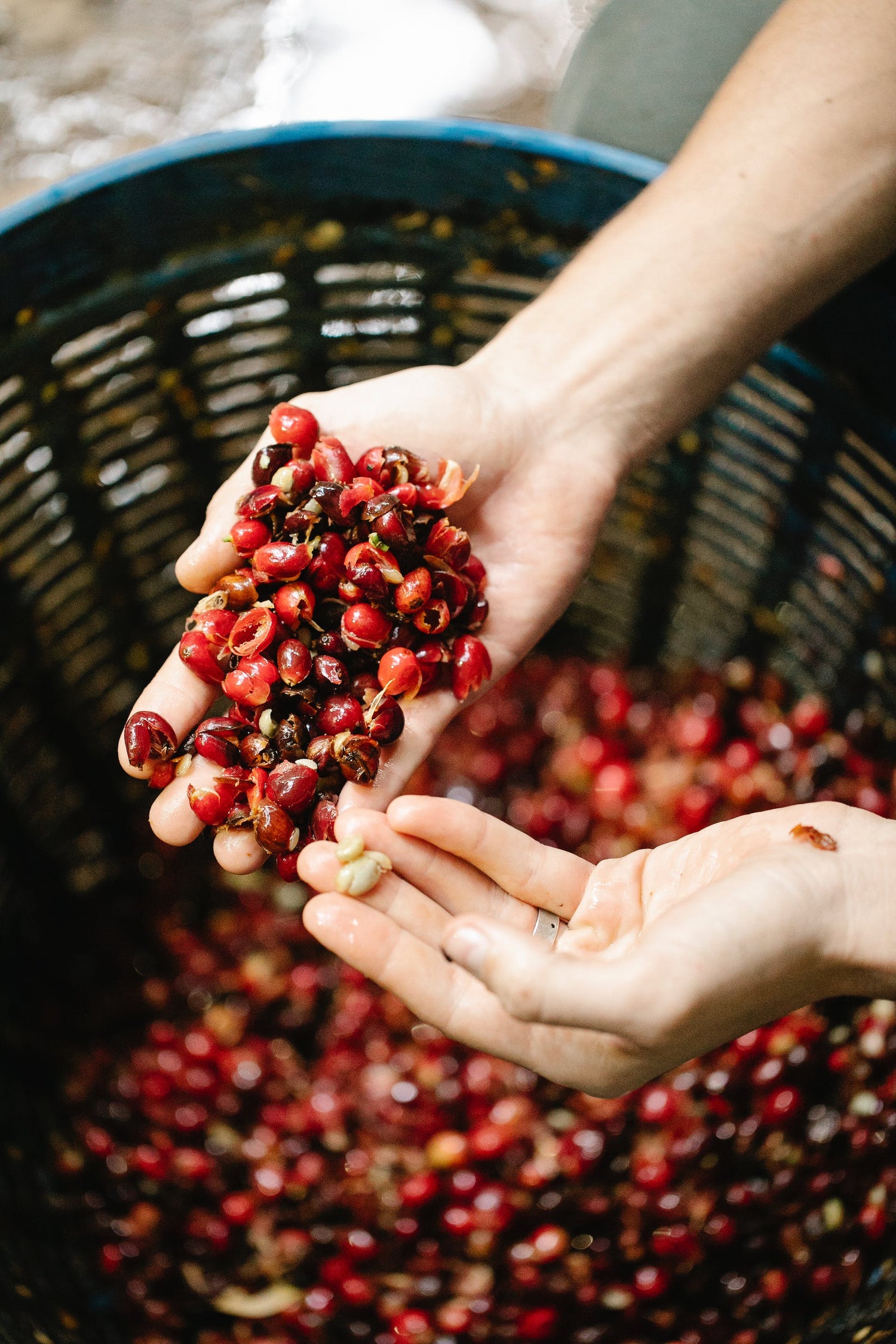
This happens after the coffee harvest
Harvesting coffee is an art that significantly influences the quality of the end product. But it's not done with that. The processing of the coffee cherries is also crucial. A distinction is made here between two types of preparation: Natural and Washed. With both methods, only the inner coffee beans are left at the end.
In Natural Processing, also known as the traditional method, the coffee cherries are spread out under the sun and turned regularly - a process that can take several weeks depending on weather conditions. Then the so-called “depulping”, the removal of the pulp, takes place.
When preparing washed coffee, the pulp is first removed using water. The beans must then be carefully dried to ensure their durability and to develop their typical taste.
After processing, the whole beans are carefully stored before being prepared for export. Storage plays a crucial role in maintaining the quality of the beans. Eventually, these precious beans make their way to roasters worldwide where they are roasted and transformed into the delicious coffee we love. From there they finally reach your cup and develop their distinctive aroma.
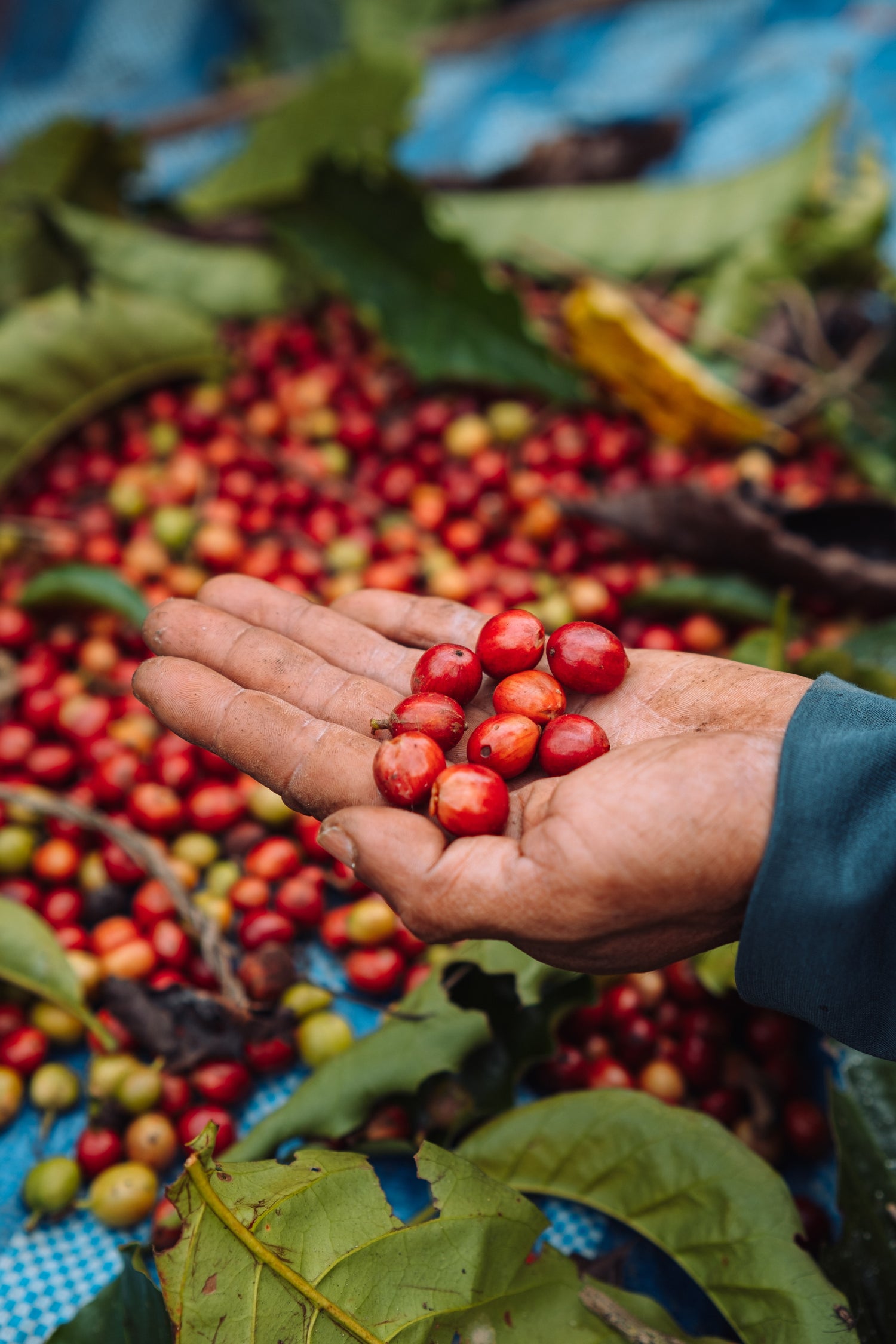
Challenges when harvesting coffee
The choice of harvesting method not only affects the quality of the coffee, but also the cost and environmental footprint of cultivation. In some regions, working conditions for coffee pickers are challenging. They stand on the plantations early in the morning and select the best cherries. Initiatives such as Fairtrade therefore work to improve their living conditions and ensure fair wages. If you buy your coffee from 60beans, you can be sure that it was produced sustainably and that the coffee farmers receive fair payment. Because we believe that really good coffee shouldn't just taste good.
Future prospects and innovations in coffee harvesting
Let's take a look together into the future of the coffee harvest.
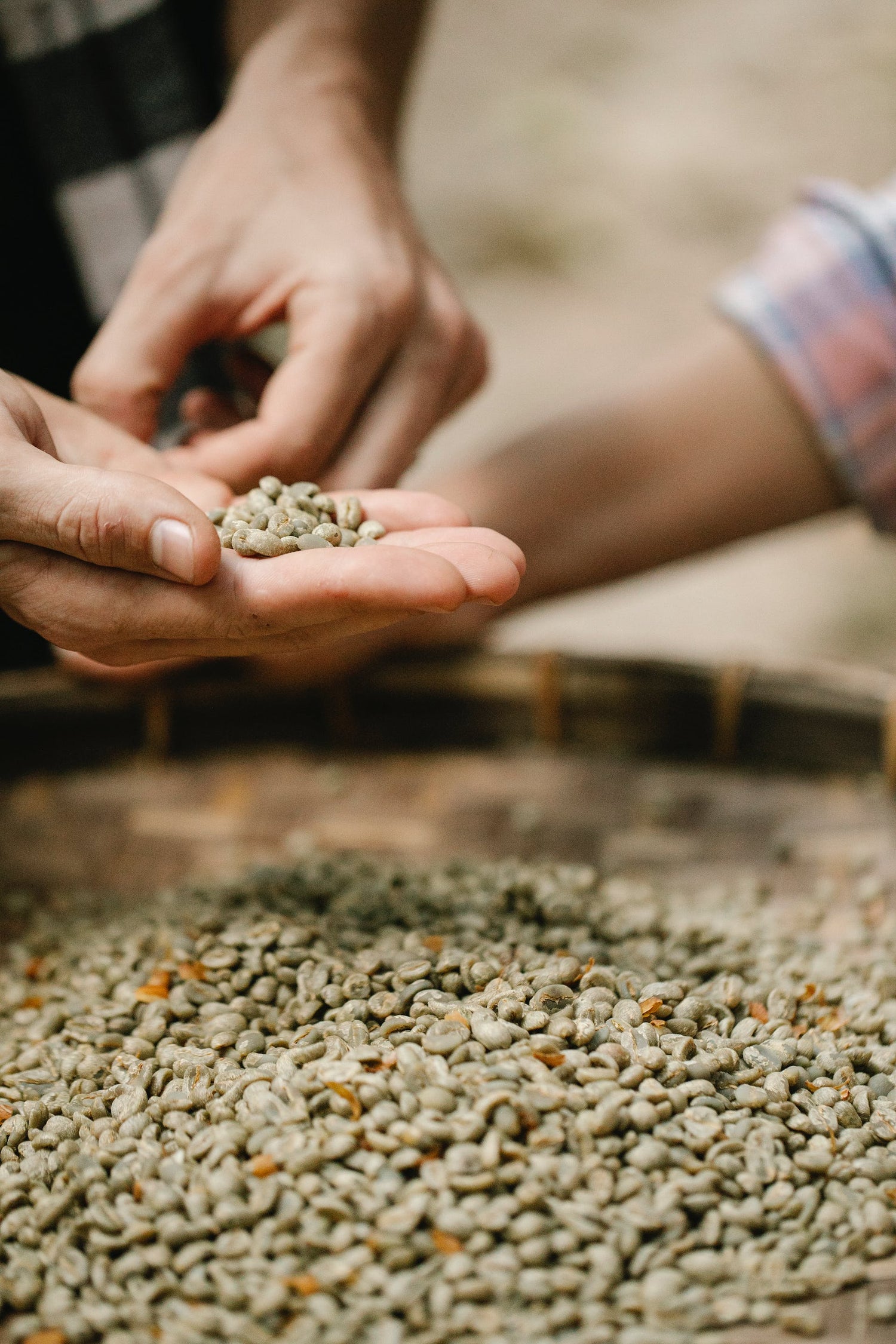
Technological advances
Technological advances have the potential to make farming not only more efficient, but also more environmentally friendly. From improved harvesting machines to innovative farming methods, the coming years could revolutionize coffee farming with exciting developments.
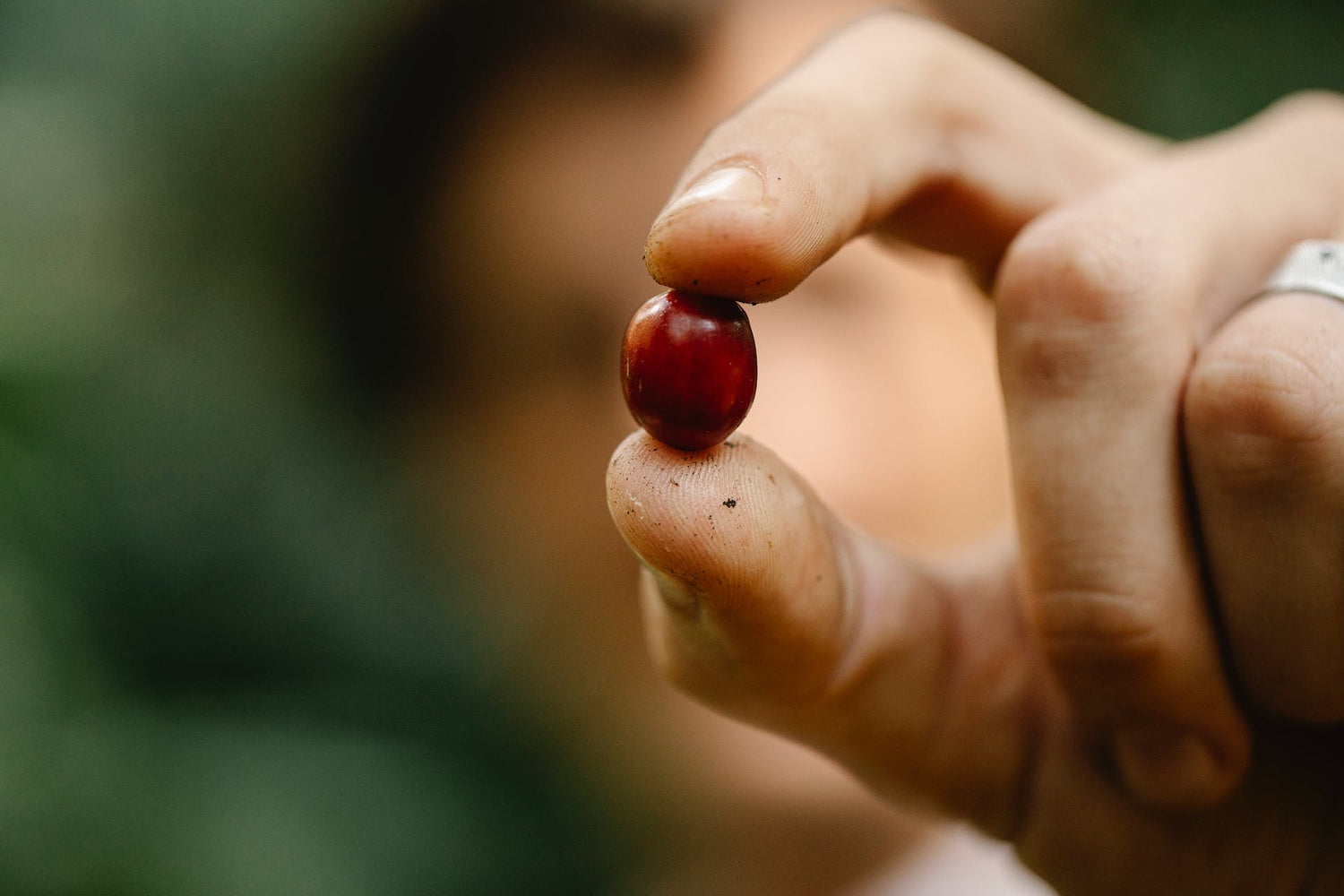
Adaptation to climate change
Climate change in particular is a key challenge for the future of coffee cultivation. Rising temperatures, changing rainfall patterns and increased extreme weather events are taking a toll on coffee plants. In this context, the development of climate- and disease-resistant coffee varieties becomes an important research goal.
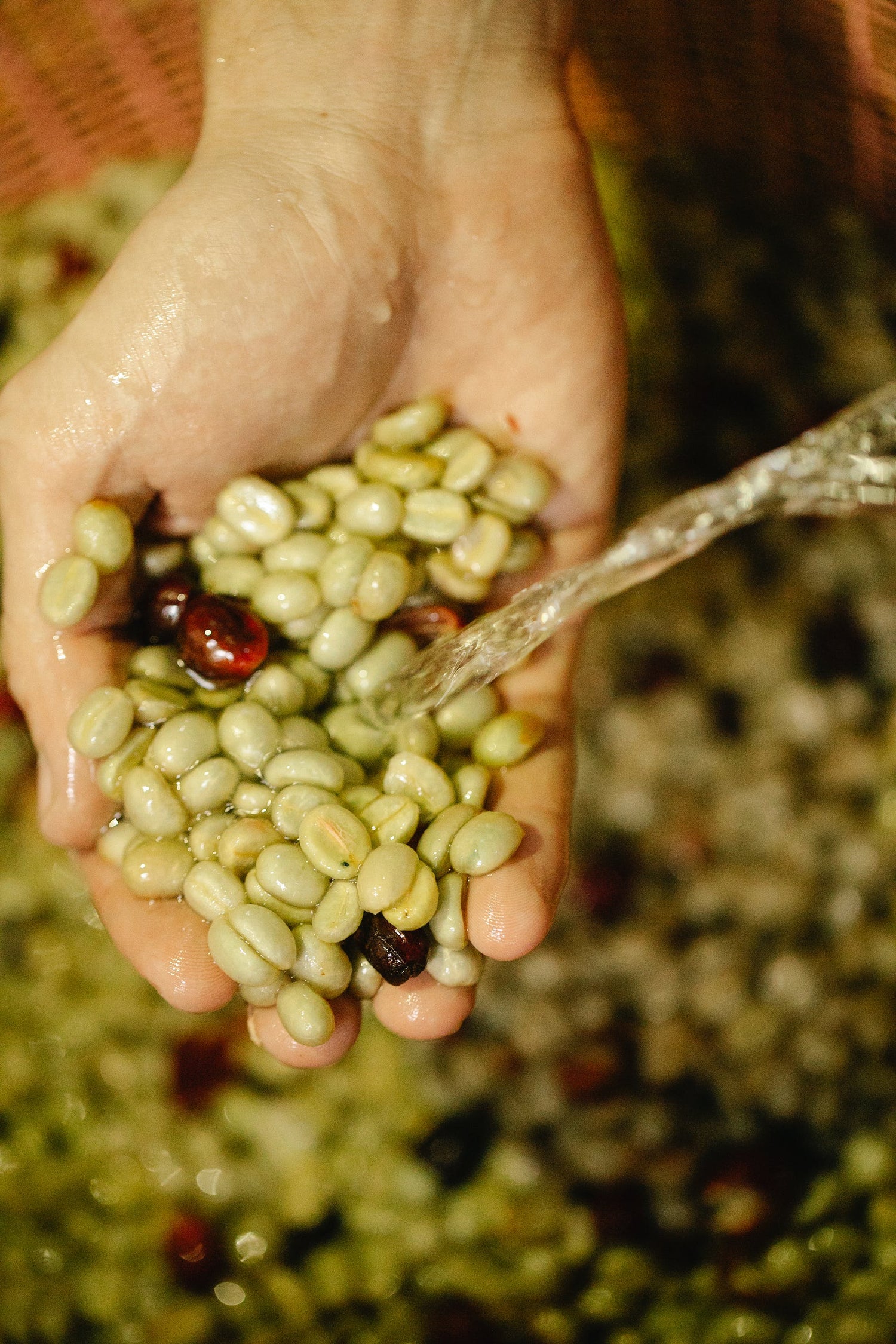
sustainability
Sustainable cultivation methods will also come into focus in the future in order to minimize the ecological footprint and at the same time ensure the quality of the harvest.
The prospect of a more sustainable and technologically advanced coffee harvest is tangible. By purchasing sustainable specialty coffee, you are definitely taking a step in the right direction and are actively contributing to creating fair living conditions.
One sip, countless stories: From the coffee harvest to your home
Congratulations, dear reader! You have undertaken a true expedition through the world of coffee harvesting - from the delicate plants to the carefully selected cherries and their processing. Every sip of coffee represents a story, a journey from the plantation to your cup. Next time you drink coffee, remember that there is a world of stories behind every sip. Your coffee will definitely taste even better!
Discover our large selection of specialty coffees
-
Experimental & Complex Tasting Set Filter
(0)Kolumbien, Äthiopien, Indonesien- €68,90 / 4 x 250g
-
- €68,90 / 4 x 250g
- Unit price
- / per
- Translation missing: en.products.product.price.price_per_kg
- €68,90 / per kg | €1,10 per / Cup
New -
Floral & Light Tasting Set Filter
(0)Kenia, Kolumbien, El Salvador- €56,90 / 4 x 250g
-
- €56,90 / 4 x 250g
- Unit price
- / per
- Translation missing: en.products.product.price.price_per_kg
- €56,90 / per kg | €0,91 per / Cup
New -
Fruity & Lively Tasting Set Filter
(0)Costa Rica, Ethiopia, Kenya- €56,90 / 4 x 250g
-
- €56,90 / 4 x 250g
- Unit price
- / per
- Translation missing: en.products.product.price.price_per_kg
- €56,90 / per kg | €0,91 per / Cup
-
Nutty & Chocolaty Espresso Tasting Set
(0)Brazil, Colombia, El Salvador, Peru- €42,90 / 4 x 250g
-
- €42,90 / 4 x 250g
- Unit price
- / per
- Translation missing: en.products.product.price.price_per_kg
- €42,90 / per kg | €0,69 per / Cup
FAQ coffee harvest
frequently asked Questions
When is coffee harvested?
The coffee harvest varies depending on the climate and growing region. In most cases, the main harvest takes place once a year, between April and October. However, there are also some regions where coffee is harvested all year round.
Which coffee plants are harvested?
The two main types of coffee, Arabica and Robusta, are grown commercially. Arabica is often grown at higher altitudes and is known for its high-quality flavors, while Robusta grows at lower altitudes and has a bolder flavor.
How is coffee harvested?
The coffee harvest is usually done by hand, especially with high-quality Arabica beans. The harvest workers pick the ripe coffee cherries from the trees. In some cases, coffee harvesting can also be done by machine, which is more efficient but less selective.
When are the coffee cherries ripe?
The ripening time of coffee cherries varies depending on the variety and growing region. Generally, the cherries are harvested when they have reached a vibrant color - for example red or yellow - and are soft to the touch. Overripe or green cherries are generally avoided.
How does the harvest affect coffee quality?
Care during harvesting is crucial for coffee quality. Selective hand picking allows only ripe cherries to be harvested, resulting in higher quality. However, mechanical harvesting can result in unripe or overripe cherries, which can negatively affect the taste.
What happens after the harvest?
After harvesting, the coffee cherries are processed to extract the beans. This process can be done wet or dry. In wet processing, the cherries are washed before the beans are extracted. Dry processing involves drying the cherries in the sun before removing the beans.
How does the growing region affect the harvest?
The growing region has a significant influence on the taste of the coffee. Altitude, climate, soil conditions and other environmental factors play a role in the development of flavors. Coffee from different regions can therefore have different flavor profiles.
More coffee knowledge
View all-

Cleaning a Coffee Pot: A Guide to Proper Care
Whether it's coarse dirt or light dirt - with our guide you'll be able to clean your coffee pot in no time. Also find out how you can avoid pollution...
Cleaning a Coffee Pot: A Guide to Proper Care
Whether it's coarse dirt or light dirt - with our guide you'll be able to clean your coffee pot in no time. Also find out how you can avoid pollution...
-

Flower coffee: what does the term mean?
Floral coffee? What should it be? If you have just asked yourself this question, you should read this article. Because perhaps you have already prepared it yourself unknowingly.
Flower coffee: what does the term mean?
Floral coffee? What should it be? If you have just asked yourself this question, you should read this article. Because perhaps you have already prepared it yourself unknowingly.
-
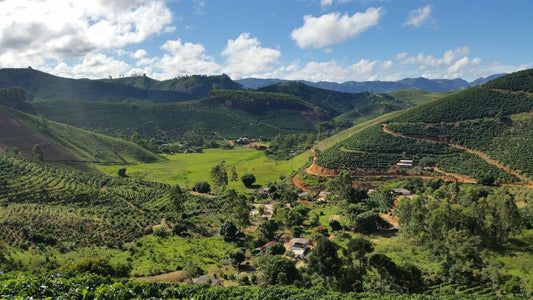
Growing Coffee: From Plant to Cup
Immerse yourself in the fascinating world of growing coffee! In this article, you'll learn how coffee grows, what techniques are needed to harvest perfect coffee beans, and what developments are...
Growing Coffee: From Plant to Cup
Immerse yourself in the fascinating world of growing coffee! In this article, you'll learn how coffee grows, what techniques are needed to harvest perfect coffee beans, and what developments are...







